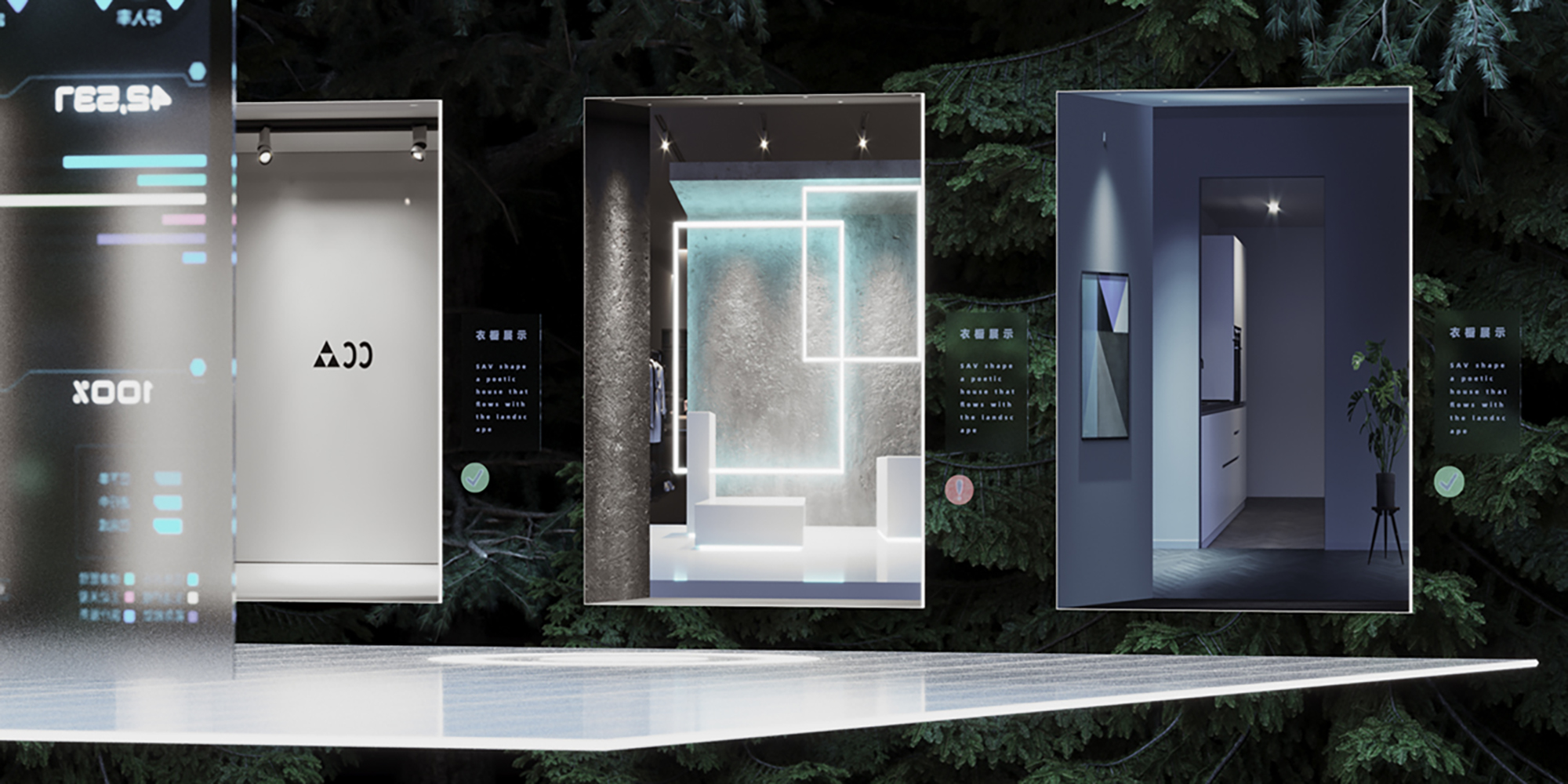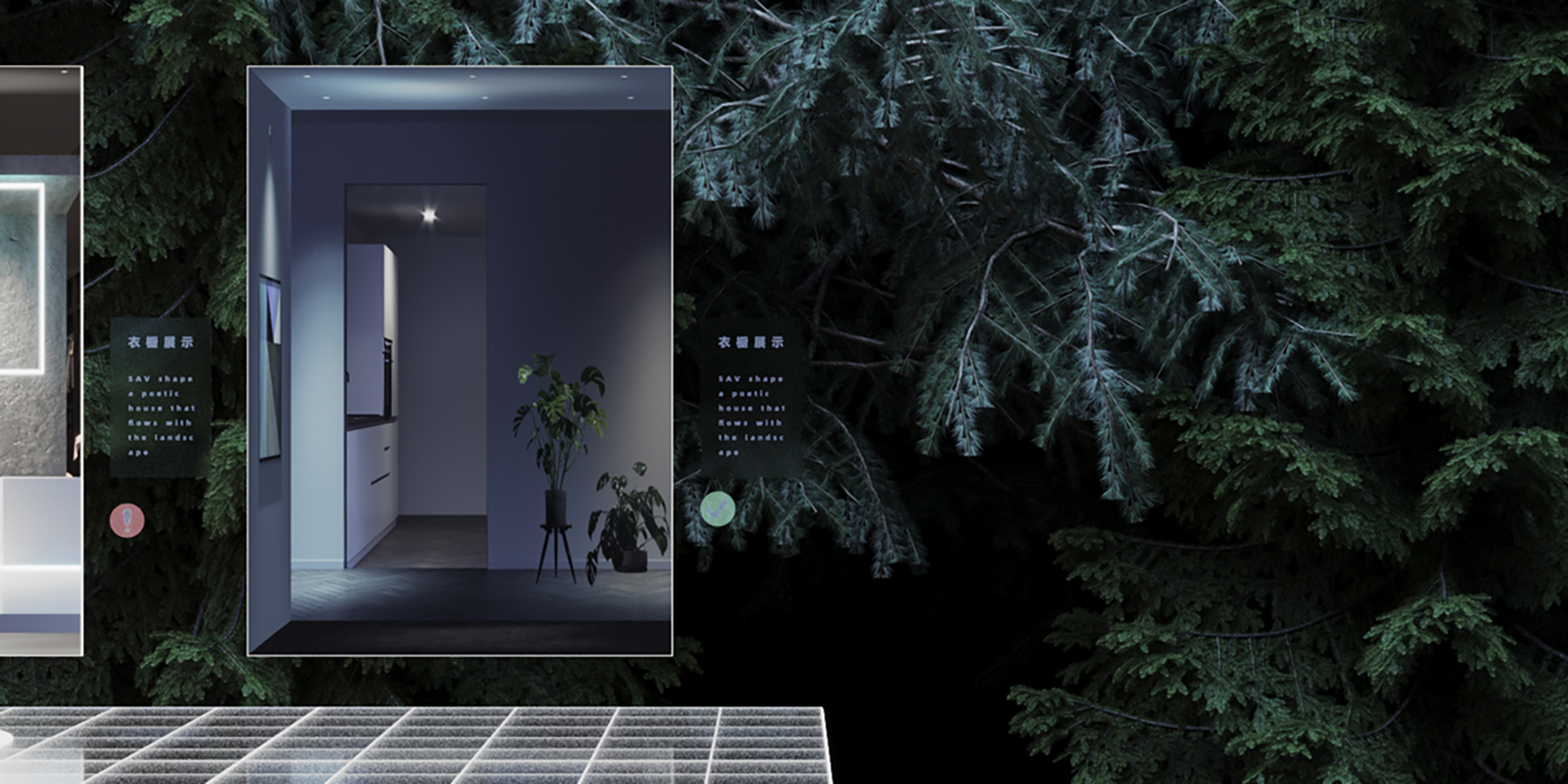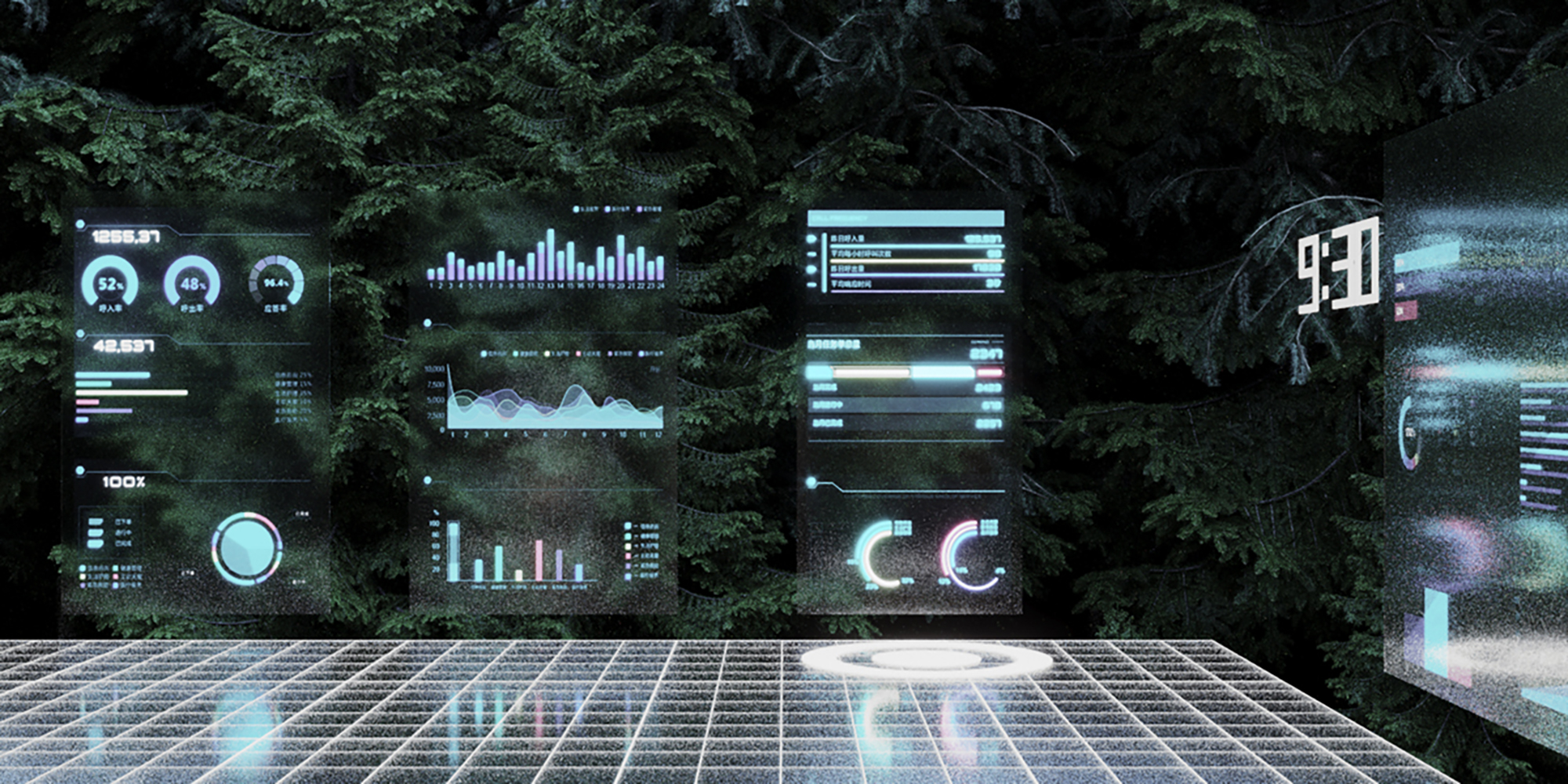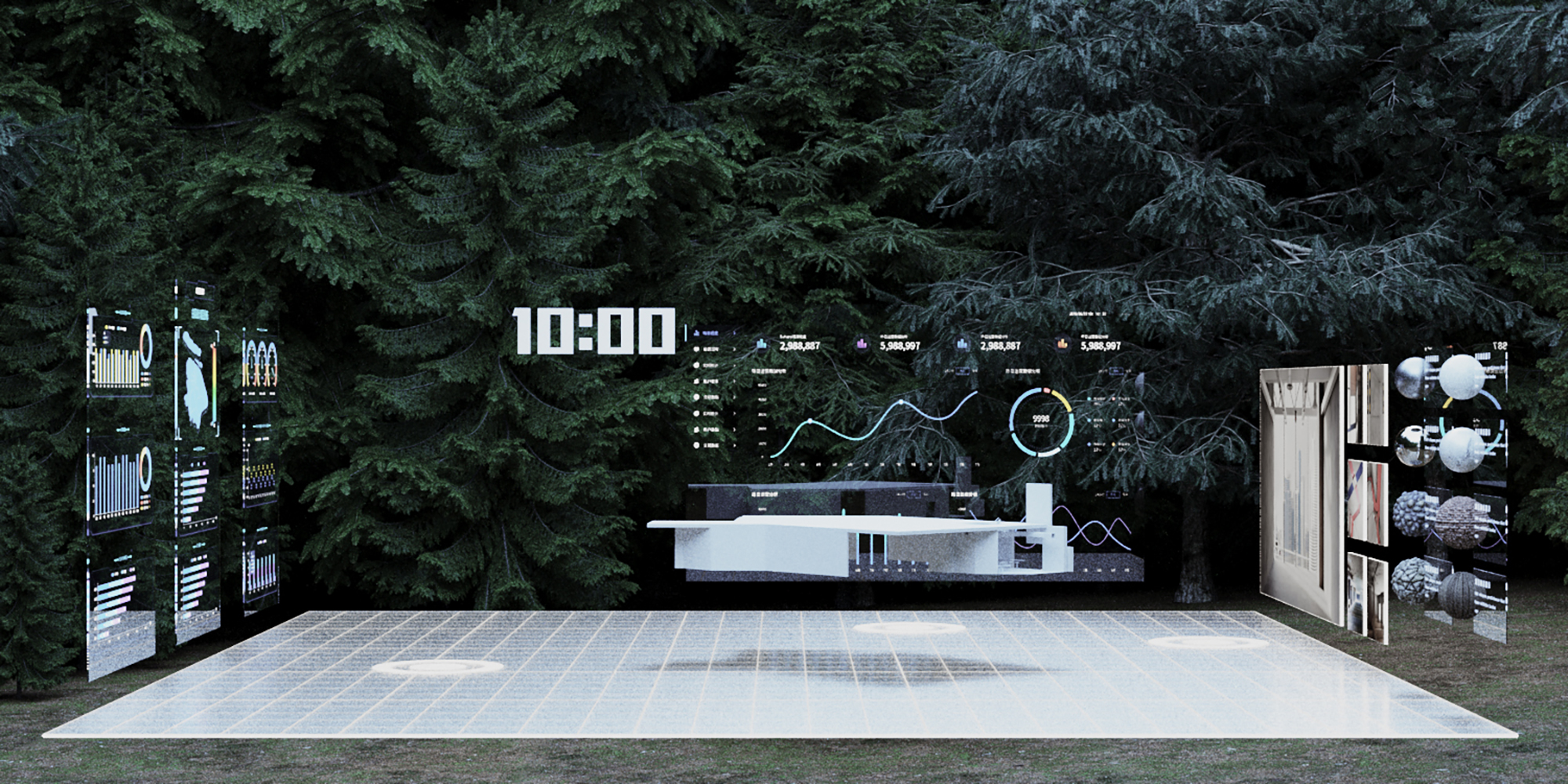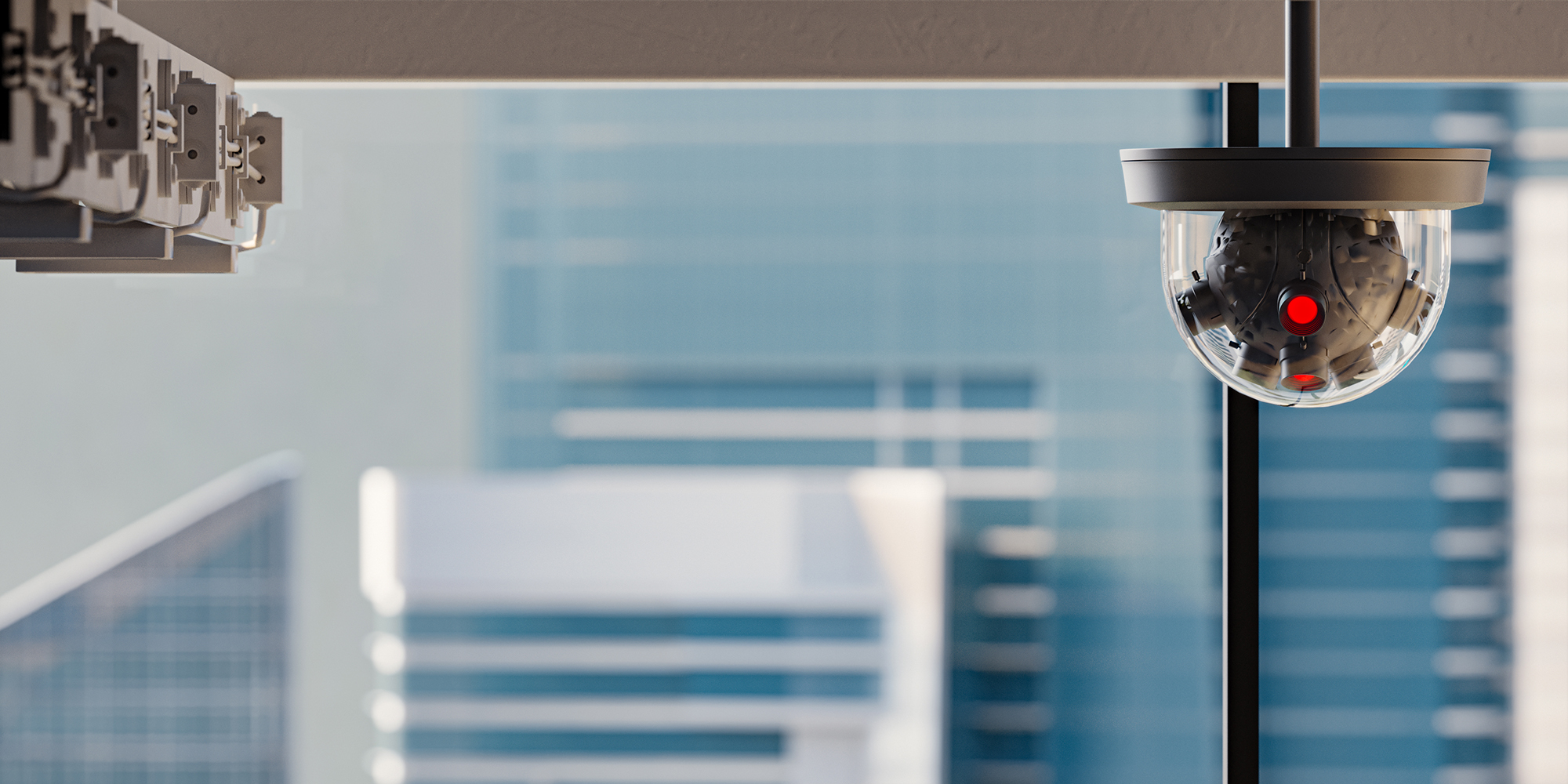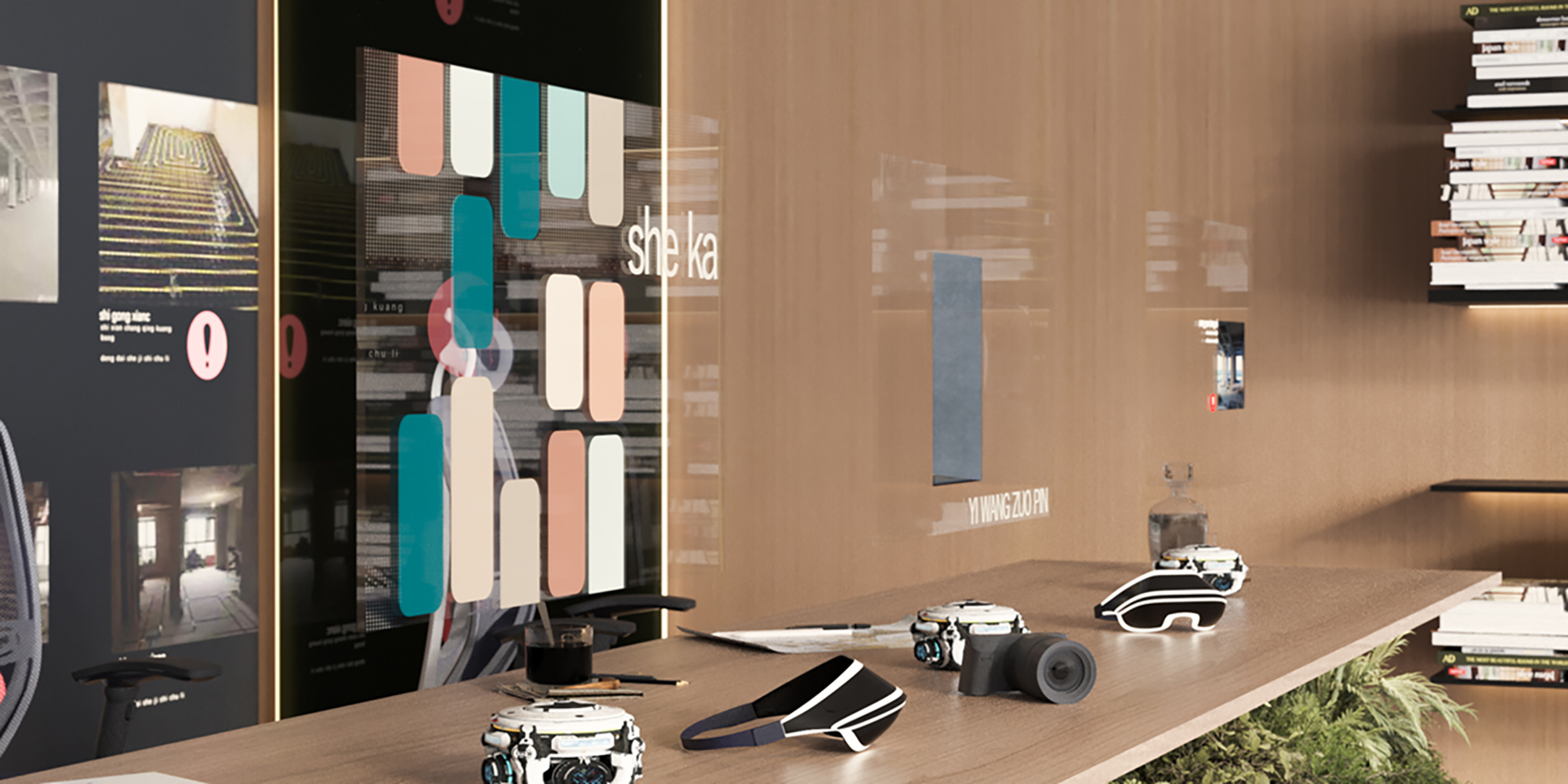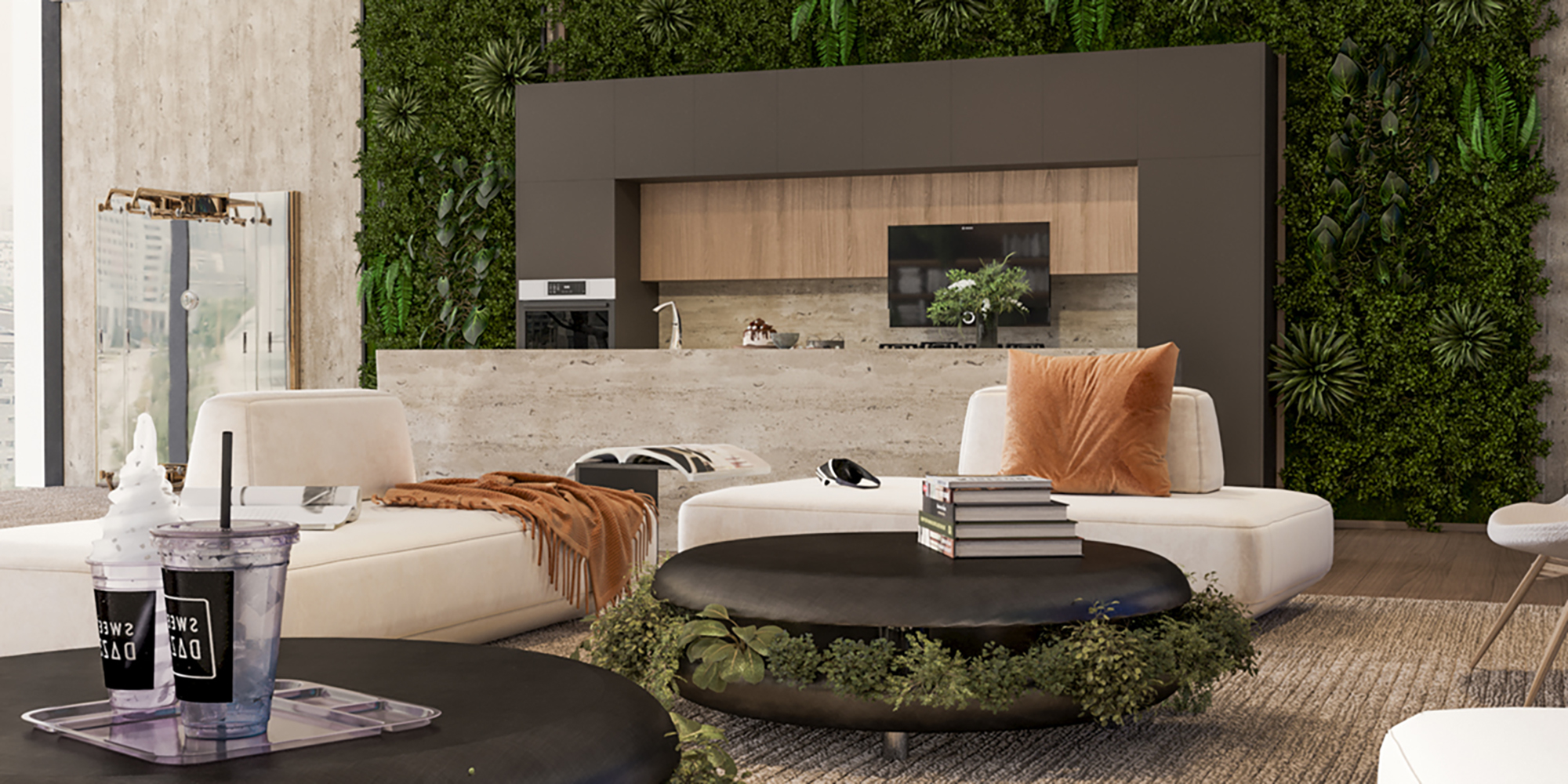This project envisions a virtual online office space for a spatial design company. It is a conceptualization of a possibility—fictional, non-existent, and uncertain. It may be realized in the near future or may never come to fruition. We hope for better ways to manifest our aspirations in the brief future, making the future arrive more favorably.
Civilization is incessantly driven forward by an awareness of efficiency, and the impact of the pandemic has forced more companies to opt for remote work, leading to an increased recognition of online trends. Leaving aside the current development of the so-called metaverse, a reflection on life over the past two decades reveals that the virtual world on phones and computers has gradually occupied a larger percentage of people's lives, subtly reminding everyone that the future is already here. Through interviews with employees and executives engaged in remote work, we found that although online work ensures company operations, it is often criticized for low efficiency and poor interactive experiences. Common feedback includes delayed communication, the inability to engage in casual interactions, and the challenge of creating a work atmosphere at home. In summary, there is a lack of a sense of freedom and comfortable interaction in the current online work environment. Human technology has not yet reached a point where comfortable online interaction is widespread. Despite this, the shift to online work has begun, and the current virtual space resembles an unprepared actor thrust onto the central stage by the pandemic, delivering a somewhat clumsy performance to gain popularity.
Setting aside the challenges of technology dissemination, if a cloud-based space where people can freely communicate and exist is realized, perhaps a company or business only needs less than 20% of its workforce to handle tasks offline, while 80% can work online and coordinate with the offline team. With a rational and sound system, substantial commuting time could be saved, significantly reducing the operational costs of companies. The impact of the online shift goes beyond these aspects; it may even affect the structure of cities, population distribution, and more, providing numerous unknown possibilities for businesses and brands.
This project does not envisage macro-level phenomena; different industries, scopes, and frameworks require different approaches. We express our insights into the future to the fullest extent through the potential of a virtual office environment for a spatial design company. Humanity has numerous fantasies about the future world, and while imagination allows us to reach for the sky, it is grounded technologies that truly change the destinies of most people. We refrain from overly distant speculations, and our virtual office space construction is based solely on the widespread use of VR and on-site space 3D scanning technology.
The more dimensions information traverses, the richer the experience becomes. We believe that the fundamental reason for the low efficiency of online office work is the limitation of screens. As long as we are confined to a flat information transmission, ideal interactive experiences are unattainable. The future of interaction involves transforming the flat into spatial, converting data into visual. VR glasses technology is currently the most accessible means of transforming flat into spatial, and in our field of spatial design, 3D scanning can convert entities into data and present them in virtual space. The widespread adoption of VR glasses and 3D scanning is visible to the naked eye and is our chosen prerequisite in this project based on our judgment of the future.
Upon entering, there is a freely navigable space resembling a computer desktop, serving as the hub for all functions and work content. Each person has a corresponding avatar in the space, facilitating free communication or forming multi-person chat rooms. This space also serves as a venue for internal company meetings, with a large projection plane in the center suitable for discussing any project or progress. Digital displays on the surrounding walls show real-time updates on all ongoing projects, reflecting progress, status, and completion.
Each project has a dedicated workstation where teams can collaboratively complete design tasks. The workflow is similar to collaborative work in Revit, encompassing models, materials, construction drawings, node diagrams, and more. It facilitates coordination with construction teams to present construction cycle states through complete model reconstructions. Users can immerse themselves in the space model in real-time, experiencing remote and instant communication with project sites and internal model details within the virtual space.
For multi-party project meetings, virtual meeting rooms can be created, accessible only to those with meeting qualifications. When a meeting room is created, all relevant materials, including models, materials, original site models, nodes, and sectional construction models, are promptly integrated into the meeting space to ensure optimal discussion results. The platform allows for seamless retrieval and viewing during follow-up project meetings.
On-site Project Management :
A significant challenge in the architecture and spatial design industry is on-site control, involving commuting and effective communication. With the maturity of 3D space scanning technology, it is envisioned that every project site will be equipped with 3D scanning devices to meet timely upload requirements. This significantly reduces the frequency of physical site visits and efficiently resolves issues. The daily status of the site is automatically uploaded to the company's cloud-based project site module at fixed times. Designers can promptly enter the updated "cloud" site for follow-up, ensuring that issues are communicated and resolved in a timely manner.
Equipping construction sites with VR devices enables real-time interaction with remote designers. Discussions and annotations on site issues can take place, even in situations involving time differences or non-simultaneous online presence. One party can make notes, suggestions, and updates within the online site space, and the other party, upon logging in, automatically receives reminders to ensure efficient problem-solving. This model allows the industry to overcome geographical, time zone, and venue limitations, enabling the acceptance of projects from around the world. It is not just spatial design companies that can benefit; perhaps other industries facing geographical restrictions can also break free from limitations using similar methods, broadening their market reach.
Offline Office Space:
Despite the operation of a virtual office space online, some work still requires physical space, such as periodic site visits, face-to-face meetings, and material research. Offline offices will possess the capability to interact with online members at any time.
As a result of the shift of a significant portion of work online, offline office spaces will not resemble traditional workstations but will be more like areas with flexible office capabilities, emphasizing design for comfort that online spaces lack.
Online Showcase Space:
The online showcase space is a separate area from the office space, accessible to clients or any online visitors. The space showcases all completed projects, allowing visitors to enter and experience the interior of each project. Interaction with the showcase space is limited to "customer service" requests, where company personnel, upon receiving a request, enter the online showcase space for project explanations. Visitors can also, with an employee's assistance, temporarily enter the company's internal online workspace to explore ongoing projects and construction sites. This form of showcase space essentially transforms the three-dimensional information of a website, possibly representing a combination of spatial and interaction design, which may replace or evolve from websites, becoming a new form of information dissemination.
Our exploration of the future is contingent upon trends, which are brought about by time and proven by time. Design will become a collaborative effort in many aspects: solving physical problems through spatial thinking and interactive logic. Our vision is merely one possibility, and the future will undoubtedly meet the expectations we hold now. We must always maintain a forward-thinking perspective on present conditions. The development of efficiency consciousness will shrink the world, and eventually, we will face a globalized world where distances are negligible.





